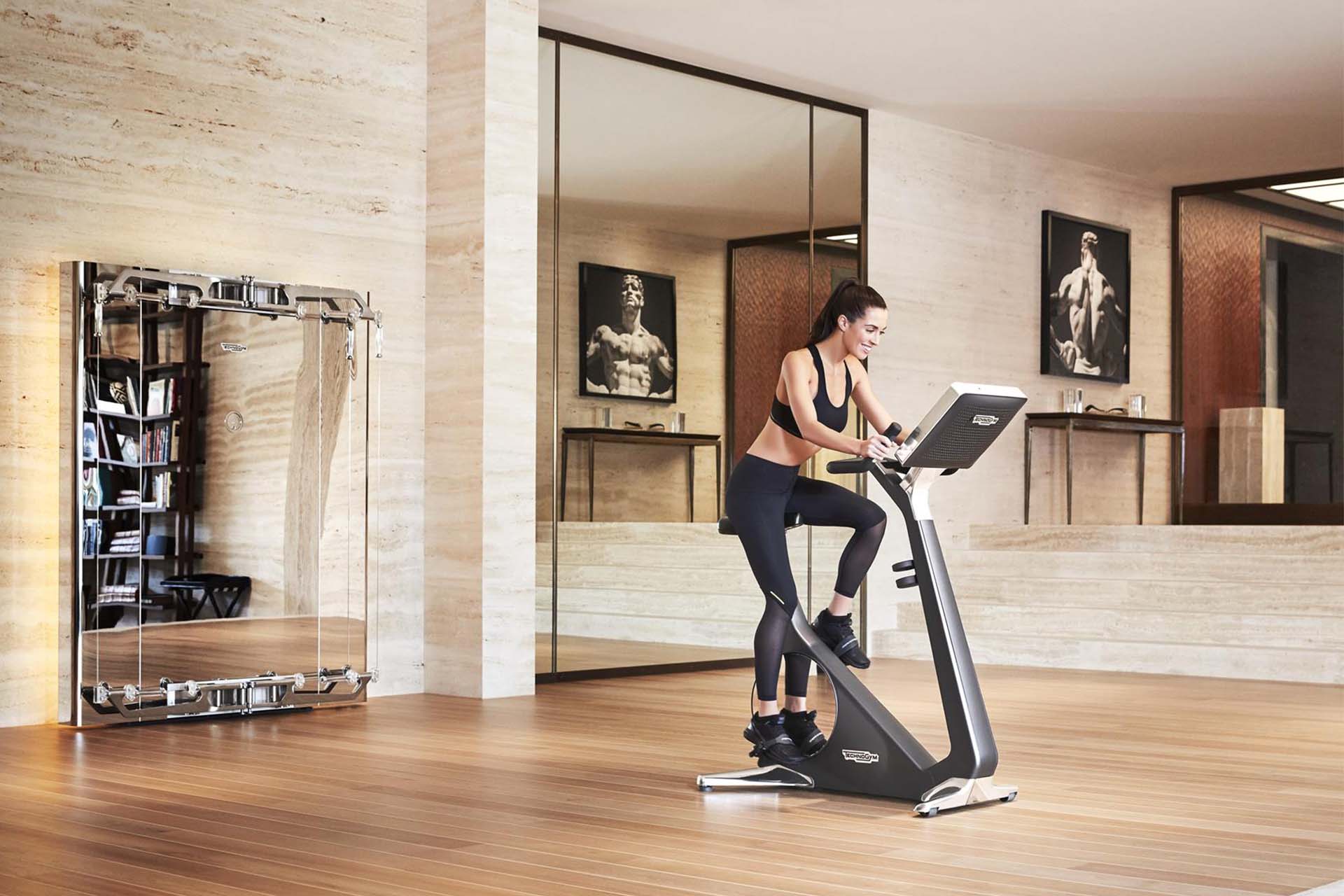Walking, which is a form of fitness that won’t ever be taken from us and can be easily done at home with Technogym equipment, has recently become a regular part of many people’s fitness routine. In addition to improving fitness, walking also boosts our heart health and offers a kinder workout on our joints than running. If you are a walker, there are several ways you can turn a simple walk into a challenging workout…
As humans, we were made to walk. Unlike running, a lot less pressure is placed on our joints when we walk. When we walk, our knees, hips and ankles are far less exposed to this impact, which in turn reduces our chance of injury. Walking can also help improve our fitness levels and can boost our heart health as it improves circulation and lessens our chances of high blood pressure. Moreover, when we go for a walk, the amount of oxygen that flows around our body increases, helping to boost our energy.
It has been observed that walking has also mind benefits. A study by California State University showed that the more steps people took each day, the happier they were. So, if you’re having a dull day, getting outside for a walk could be one of the best things to do! Walking might be regarded as a way to get from A to B or an activity you enjoy doing with friends. Whilst both are great, more calories can be burned by ramping up the intensity of the walk and with some easy tweaks. Added to this, walking also helps strengthen your lower body, especially if you add in an incline.

Prefer a Hilly Walking Route
As a level of incline adds a greater resistance to our walk, a hilly walking route can turn into a tougher workout. Forcing your legs to work a little harder helps strengthen your muscles and increases your heart rate, which results in more calorie burn. You can try walking up a hill at speed and then walking back down again. You can do this five times and aim to get quicker each time. The downhill walk might seem easier, but this is also very helpful as it forces you to engage your core to stay upright, as well as working your calf muscles in the lower legs.
Use Some Weights
Such as hilly walking routes, ankle weights and/or wrist weights also force your muscles to work harder. So, more calories are burned. If you opt for wrist weights, be sure to swing arms backwards and forwards as you walk, to ensure your arm muscles are working. Walking at speed with ankle weights also helps strengthen your hamstrings, quads and calves, as well as the glutes; the largest muscle in your body.
Pause for a Bodyweight Workout
You can make your walk more efficient by stopping every 10 minutes for a three-minute bodyweight circuit. This doesn’t need to be super intense, and could consist of three different exercises, each done for one minute. You may try mixing up bodyweight squats, step ups on a bench, press ups on a bench, forward and reverse lunges and tricep dips on a bench. Once the three minutes are up, go back to your walk. Essentially, a 30-minute walk can help work every muscle in your body.




